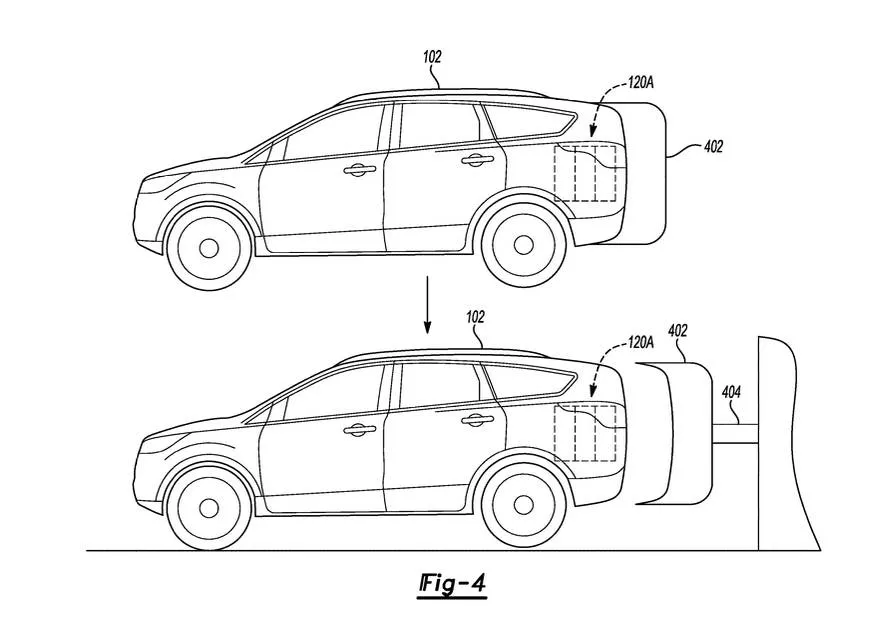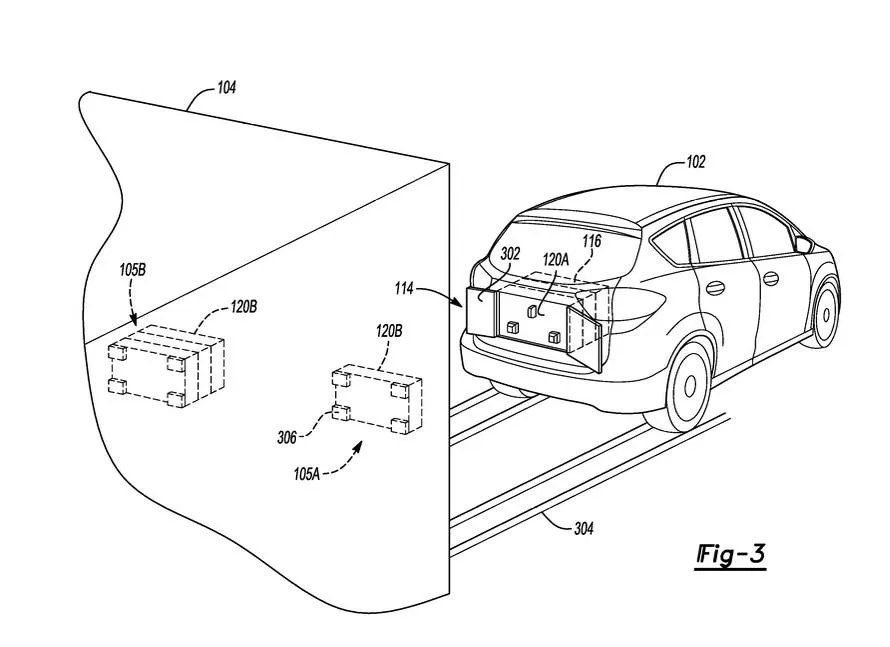A recently discovered Ford patent filing details an EV battery swapping system with an unusual design.
Most battery swapping systems to date are designed to work with floor-mounted battery packs, but a patent application published by the United States Patent and Trademark Office (USPTO) on May, and originally filed by Ford in 2018, discusses drive-up docking stations that would use a vehicle’s own power to complete the swap.
As described in the application, vehicles would be equipped with battery modules that could be individually disconnected and swapped. These modules would be accessed via the ends of the vehicle, so vehicles would pull up to a docking station as if they were parking at a charger.
A potential advantage of this system would be elimination of the need to detach and handle entire battery packs from underneath the vehicle, which can be tricky due to the weight of the packs. Ford also mentions self-aligning connectors for the battery modules that would make the docking and undocking processes easier. The docking stations could also double as charging hubs, according to the automaker.

Ford EV battery swapping patent image
Ford envisions this battery swapping system as being applicable with a wide variety of vehicles, including both EVs and hybrids, as well as battery-powered machinery ranging from unmanned aerial vehicles (UAVs) to “a watercraft such as a submarine, or a robot.”
EV battery swapping is an attractive idea because it eliminates long charging times, but commercialization has been slow. Chinese automaker Nio does operate a large network of swapping stations in its home country, though, and aims to expand to Europe.
In the U.S., startup Ample is marketing its own swapping system, which Stellantis has agreed to test with the 2024 Fiat 500e.
